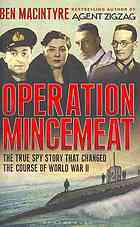Title: A Streetcar Named Desire
Rating: 5 Stars
As I continue to work through the AFI list of best films, last week I watched A Streetcar Named Desire. I’d previously watched the film and seen the play performed at the Oregon Shakespeare Festival (and yes, I know it was written by Tennessee Williams and not Shakespeare, but they do branch out). It’d been many years since I’d done either so it was interesting to revisit.
Most people, if they know anything at all about the play or the film, primarily remember Brando screaming Stella.
Well, it certainly is more than that. Considering that the play opened in Broadway in 1947, the subject matter is actually quite shocking. Having lost her estate and resigned from her teaching position, Blanche DuBois, a now faded Southern Belle, shows up on her sister Stella’s doorstep in New Orleans. Stella’s husband, the uncouth Stanley, sees right through Blanche’s weak facade and begins to torment her for the purpose of exposing her.
By the time that the play is done, we understand that Blanche is an alcoholic. When she was much younger, she found her husband in bed with another man. She shamed him so much that he ended up killing himself. She didn’t resign from her teaching position but was fired for an affair with an underage student. Before she came to New Orleans, she was living in a cheap hotel frequented by prostitutes.
All of this has left Blanche mentally frayed. Stanley bears down upon her to break her even more. She has a full mental collapse after Stanley violently rapes her. She is carted off to a mental institution.
The play ends with Stella willfully choosing not to believe Blanche’s story and staying with Stanley.
If all of that is not enough, there are additional scenes of drunkenness and domestic abuse.
This is a lot to take in for a play written in 1947. The play was turned into a film in 1951. In that year, the film industry was still operating under the Hays Code, which set very strict moral guidelines.
Considering that it was made under the Hays Code, the film is actually quite astounding. You need to look at it through the lens of that time to really understand how groundbreaking it was.
You have to start with Brando. If your only image of Brando is The Godfather or Apocalypse Now, you’ll need to sit down for this film.
He radiates ferocious sexual energy. He looks beautiful. Whenever he’s on the screen, your eyes are drawn to him. Considering all of the baggage that Brando’s acting later carries, when you watch this film, you need to understand that nearly no one knew who he was. This was his first broad exposure. Watching this film in 1951 must have been like watching a supernova explode.
Nearly all of the actors in the film were from the original Broadway play. They all were adherents of the newly christened school of method acting. Instead of stylized performances, the actors all embodied their characters and acted naturally.
All except for Blanche, played by Vivien Leigh. She was a classically trained actor that gave very stylized performance.
Considering the larger theme of Blanche’s alienation from the New Orleans denizens through her artificial high class airs, Leigh’s formally stilted performance actually served quite well as a foil to the method actors. The fact that Leigh was also bipolar adds a tragic dimension to her performance.
Having to abide by the Hays code did have a weird impact upon the film. First of all, Blanche’s first husband couldn’t be gay. Although there’s a really discrete reference to it, the film made it appear that he killed himself just because she scorned him for being weak. Stanley’s rape of Blanche could not be shown. The film cut that scene down to a mirror being broken as Blanche fights Stanley. The Hays Code also forced the director Elia Kazan to change the ending. In the play, Stella stays with Stanley. Since the Hays Code dictated that no one can profit from immoral behavior, in the film Stella leaves Stanley. Yes, according to the Hays Code, Stella could not stay with Stanley because of a rape that it would not allow to be shown.
I’ve now seen over 85 films on the AFI 100. This film, above all others that I can think of, truly seems groundbreaking. Even though filmed in black and white, due to its naturalistic acting and themes, it’s a film that seems to be decades ahead of its time.





